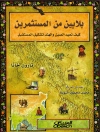This book is the first comprehensive presentation of a Kaiyu Markov model with covariates and a multivariate Poisson model with competitive destinations. These two models are core techniques when the authors and colleagues conduct their Kaiyu studies. The two models are usually used to forecast the effects of specific urban redevelopment on both the number of visitors and consumer shop-around or Kaiyu movements. Their Kaiyu studies originated from the constructions of a Kaiyu Markov model and the disaggregated hierarchical decision Huff model almost simultaneously around the early 1980s. This book retrospectively reviews how these models have evolved from the start to the present state, and previews the ongoing efforts to make further extensions of these models. The extension of the Huff model started from the disaggregated hierarchical decision Huff model with shop-arounds. In retrospect, the model formulated the consumer’s simultaneous choice of destinations as a joint probability. The mechanism to determine this joint probability was a recursive conditional probability system. Now the Huff model has shifted from joint probability to multivariate frequency Poisson with competitive destinations. On the other hand, the Kaiyu Markov model started from a descriptive model. Because it cannot forecast changes in shop-arounds or consumer Kaiyu behaviors, the Kaiyu Markov model with covariates was developed in which entrance and shop-around choice probabilities are explained by the respective two logit models with covariates such as distances and shop-floor areas. The noticeable point is that it can explain consumers’ probability of quitting their shop-arounds. Thus, the model enables one to evaluate the effects of urban revitalization policy that promotes consumers’ shop-arounds or Kaiyu behaviors. Furthermore, if the Kaiyu Markov model can estimate the actual numbers of flows of consumers’ shop-arounds among shopping sites, the corresponding money flows also can be estimated as economic effects. This book discusses from scratch the evolution of all these topics. Thus this book provides the basics of the Kaiyu Markov model, a tutorial for the theory and estimation of the conditional logit model, and a chapter serving as a practical research manual for forecasting changes caused by urban development based on consumers’ Kaiyu behaviors.
Зміст
Chapter 1. A disaggregate hierarchical decision Huff model incorporating consumer Kaiyu choices among shopping sites.- Chapter 2. A dynamical Huff model: Computing the competitive equilibrium distribution of shop floor areas over a city center commercial district using the Fixed-Point Algorithm.- Chapter 3. Kaiyu Markov model and evaluation of retail spatial structures.- Chapter 4. Basics of Kaiyu Markov models: Reproducibility theorems—a validation of infinite Kaiyu representation.- Chapter 5. Kaiyu Markov Model with Covariates to Forecast the Change of Consumer Kaiyu Behaviors caused by a Large-Scale City Center Retail Redevelopment.- Chapter 6. Estimation of Disaggregate Huff and Kaiyu Markov Model: A Lecture Note on Conditional Logit Model.- Chapter 7. A Disaggregate Kaiyu Markov Model to Forecast the Sales of Retail Establishments based on the Consumers’ Frequency of Visits.- Chapter 8. How Would the Kyushu Super-Express Railway Opening Change the Flow of Tourists from the Kansai Region within the Kyushu Wide Area, Japan? : A Micro Behavior Analysis of the Destination’s Hub Function.- Chapter 9. A Micro Behavior Approach to Estimating and Forecasting the Intervening Opportunity Effects with a Multivariate Poisson Model: A Case for the New Terminal Complex of Kyushu Super-Express Railway, JR Hakata City.- Chapter 10. How would the opening of JR Hakata City, a new terminal complex of the Kyushu super-express railway, change the number of visitors, retail sales, and consumers’ Kaiyu flows in the city center commercial district of Fukuoka City?.- Chapter 11. How Many Customers Would be Brought Back from Suburban Shopping Malls to the City Center by Redeveloping the City Center Station Building, JR Oita City, Japan?: A Multivariate Poisson Model with Competitive Destinations.- Chapter 12. An Opportunity Cost Approach to Valuation of the River in a City Center Retail Environment: Another Application of Kaiyu Markov Model.- Chapter 13. Extraction of Long Sightseeing Kaiyu Routes in the Kyushu Wide Region, Japan.- Chapter 14. A Bayesian Network Model of Consumers’ Kaiyu Behaviors.
Про автора
Saburo Saito, Fukuoka University
Kenichi Ishibashi, Nagoya Sangyo University
Kosuke Yamashiro, Fukuoka University












